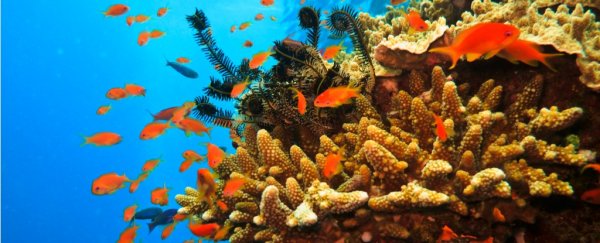Australia's Great Barrier Reef has seen better days, with a 50 percent decline in coverage over the last 30 years, and a severe El Nino event earlier this year bleaching 93 percent of the reef's coral species.
But it's not dead yet, and the Great Barrier Reef Foundation is hoping to monitor and assist the reef's recovery with a new 'robo reef protector', which it's dubbed RangerBot.
The robot was originally created to seek out and remove crown-of-thorns starfish – invasive predators that feed on coral - but now a team from the Queensland University of Technology (QUT) in Australia is working with the Foundation to expand these capacities to manage a wide range of issues in coral reef across the globe, including water quality, coral coverage and invasive species.
"This project is about giving those looking after our coral reefs the tools they need to protect these precious resources," said the Foundation's Managing Director, Anna Marsden.
"More than a billion people depend on reefs for their food and livelihood – they stand to lose the most if those important ecosystems are destroyed."
The Foundation has entered RangerBot in Google's Impact Challenge, which helps non-profit organisations create technology to help solve the world's problems.
The project has been selected as one of the 10 finalists, now in the running to win one of four AU$750,000 prizes.
"A $750,000 prize would allow us to expand our current platform's functionality into a truly multipurpose, multifunction tool for monitoring a wide range of issues facing coral reefs – coral bleaching, water quality, pest species, pollution and siltation included," said QUT researcher Matthew Dunbabin.
"It will stay under the water almost three times longer than a human diver, gather vastly more data, and operate in all conditions and all times of the day or night."
The researchers say this robot is very different from current single-purpose marine robots, which can be expensive, manually-operated, and based on acoustic technologies.
"This represents a quantum technology leap in both marine robotics and reef protection – the only autonomous, affordable, multifunction solution for effectively detecting and addressing threats to coral reefs, making RangerBot widely available and accessible to reef communities worldwide," Dunbabin said.
"I guess you could call RangerBot the Swiss Army Knife of marine robotics."
Although the public might only see the bad news about the reef, such as the issues with crown-of-thorns starfish and coral bleaching, Marsden says that the Great Barrier Reef is very well managed, but still in danger.
"Even though the Great Barrier Reef is internationally acknowledged as the best managed reef globally, due to its size and complexity, effective management is a mammoth and expensive task," she said.
"RangerBot has the potential to revolutionise the way we manage our oceans and may be a missing piece in the puzzle to save our precious reefs."
The team hopes that winning one of the grants would help the reef recovery efforts, and keep the area beautiful and full of species for generations to come.
"We want to put the cost-effective, flexible RangerBot into the hands of the people at the front line of looking after and managing coral reefs, as extra 'hands and eyes' to manage those critical environments."
You can view more about their project, and vote for the team at Google's Impact Challenge here.
Queensland University of Technology is a sponsor of ScienceAlert. Find out more about its research.

